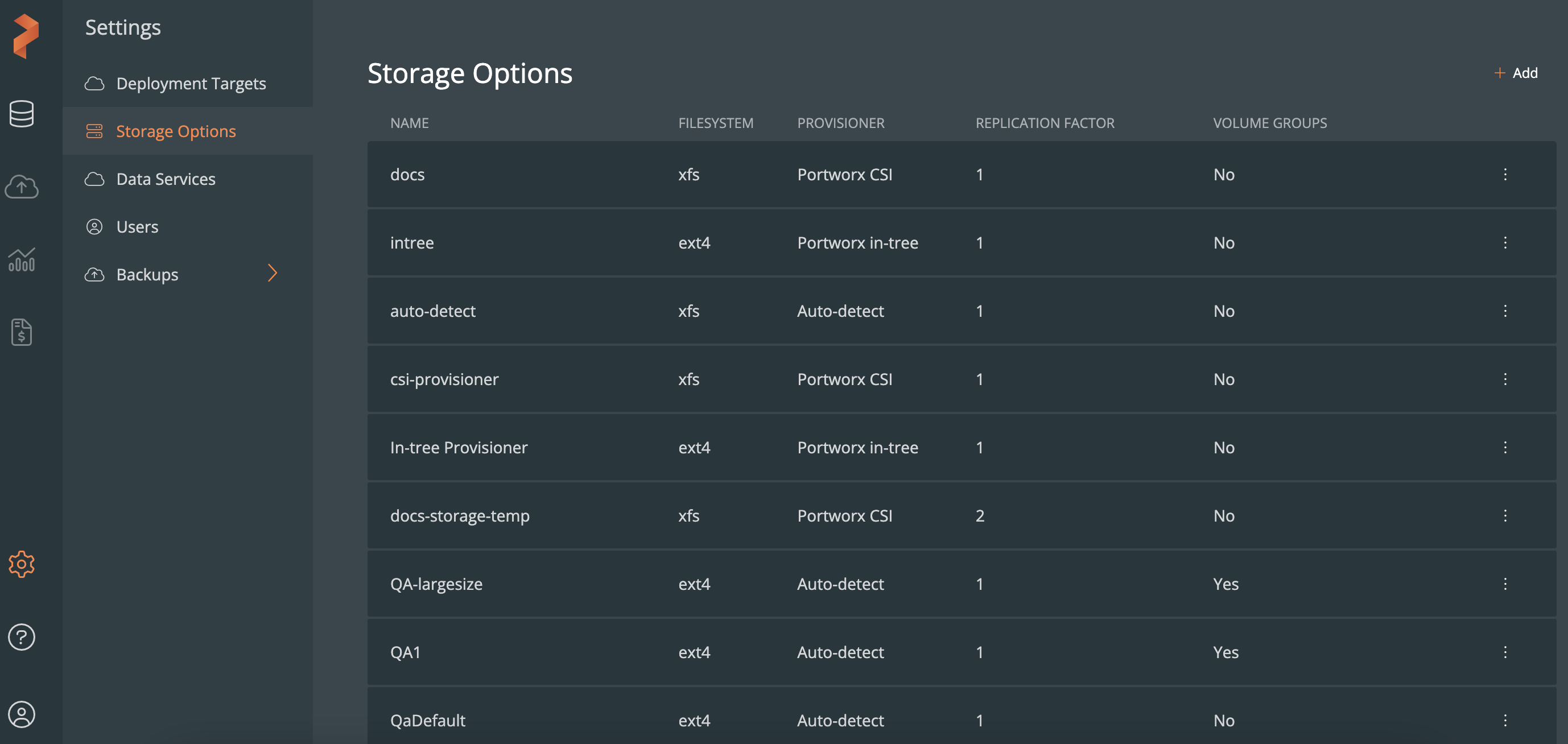Add or manage a storage option template
A storage options template defines what kind of volumes PDS uses for data services it deploys.
Prerequisites
- PDS account Admin privileges
Procedure
-
From the Storage Options tab in the Settings page, select the Add button.
-
In the Add Storage Options Template window, specify your desired values:
-
Name: enter a unique template name.
-
Filesystem Type: choose the XFS or Ext4 filesystem, based on the storage size required for your application.
-
Provisioner: choose one of the following Portworx provisioners:
-
Portworx CSI: This default option allows PDS to create data volumes with a new Portworx provisioner based on Kubernetes Container Storage Interface (CSI), which is the latest storage standard. This enables you to perform all CSI-enabled operations. For more information, see Portworx with CSI and Portworx CSI driver.
noteSince CSI is the latest provisioner standard, Kubernetes encourages you to use CSI instead of the in-tree provisioner. Portworx CSI provisioner is used as a default provisioner for Prometheus volumes in new PDS installations.
-
Portworx in-tree: allows PDS to create data volumes with an older, deprecated Portworx provisioner, which is built, linked, compiled, and shipped with the core Kubernetes binaries.
noteThe in-tree provisioner is deprecated and its support may be discontinued in future PDS releases.
-
Auto-detect: allows PDS to automatically assign the best Portworx provisioner (CSI or in-tree) possible. This automatic assignment by PDS depends on whether your target cluster supports CSI or not.
You can modify the existing provisioner option in the Edit Storage Options Template.
-
-
Volume Replication Factor: from the dropdown list, select the number of nodes to replicate your data. If you select 1, then there is only one copy of a row in a cluster, and there is no way to recover the data if the node is compromised or goes down.
-
Enforce Volume Group Policy:: if you select this option, then PDS creates a volume group for your data service deployment. The volume group includes multiple physical volumes attached to the same disk adapter and other supporting hardware.
-
-
Select Add.
The new template appears in the Storage Options page displaying the selected filesystem, provisioner, replication factor, and volume groups:

Also, the selected storage options appear in the Deploy data service → Storage Options section → -- Select Template -- dropdown.
Edit a storage options template
You can edit the storage specifications in an existing template and re-deploy a data service:
-
In the Storage Options page → the template you want to edit, select the vertical ellipsis button.
-
From the options, select Edit.
-
In the Edit Storage Options Template window, you can modify the existing template name and/or other specifications.
-
Select Save.
Delete a storage options template
-
In the Storage Options page → the template you want to delete, select the vertical ellipsis button.
-
From the options, select Delete.
-
In the Delete Storage Options Template window, select Delete Permanently.